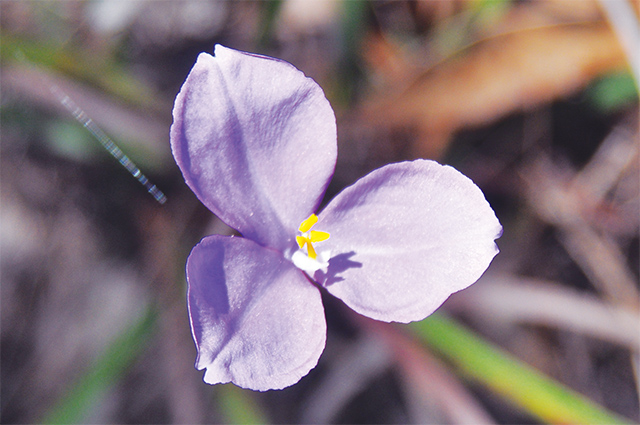
This perennial herb is found growing in the more sandy soils found in those habitats mentioned above. Mostly this plant grows in small clumps of two or more singular plants with the leaves growing from the base of the plant.
In ideal locations where these smaller clumps have been allowed naturally to propagate and spread, it is possible to locate what appears to be a much larger group of single plants growing adjacent to each other. These could be mistaken as being a single spreading plant.
Flowers usually appear on a slender stalk up to about 500mm above the surrounding vegetation which may consist of short grasses and sedges which favour the same growing conditions. The main flowering period for the Native Iris is from July through to December. So keep your eye out for this flower when you are enjoying a late winter or early spring bushwalk.
There are two similar species – Patersonia longifolia and Patersonia fragilis, which possess a very similar appearance. Yet another variation – Patersonia glabrata, has a very similar flower but its leaves do not emanate from the base of the plant but rather grow from the stems on which the flower forms.
Do not be tempted to pick any wildflowers as they need to mature on the plant and drop their seeds in order to naturally propagate for subsequent seasons. What’s more, these attractive flowers usually only last a day.[/vc_column_text][/vc_column][/vc_row]






